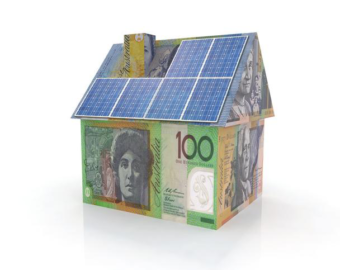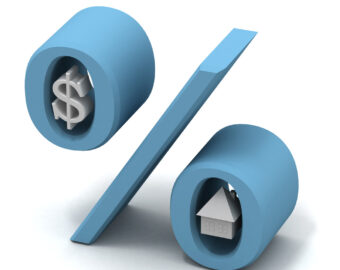In this bustling world, everybody fantasies about possessing an ideal homestead where they can track down comfort toward the day’s end. Purchasing a house is likewise turning into a Herculean assignment these days infer able from the mounting land costs. A home credit is a simple method for financing your home buy given that it’s anything but a shrewd plan to consume your whole investment funds to purchase a land or a home.
Banks and other housing finance establishments offer various sorts of home loans these days. The interest for home Loan has increased manifold in recent years and individuals have various assumptions with regards to a home credit. To cater to the requirements of various areas of society, a great deal of banks have come up with idea of presenting different home loan scheme. To cite a couple, a few banks offer specially crafted home loans.

The main types of financial institutions for home loans
There are three main types of financial institutions you are likely to come across while looking for a loan in Australia.

Banks
This is presumably the sort of moneylender you’re generally acquainted with. Banks are ordinarily since a long time ago settled establishments – so you probably had a record with one since early on.
Banks have a large network of branches, so you might have the option to visit one anyplace – despite the fact that internet banking has made branch access less significant for some individuals.

Mutuals, the ‘member-owned’ lenders
Building societies, credit unions and member-owned banks the entire fall under a similar standard of ‘mutuals’. They are owned by members not investors – which is one of their principle distinctions from different banks.
Certain individuals feel a genuine feeling of loyalty towards building societies and credit unions. They esteem the feeling of proprietorship and customized experience they regularly get.

Non-bank lenders
Non-bank lenders are privately-owned organizations, which are neither banks nor mutuals as they don’t hold a banking permit. However, don’t let that put you off, as they actually comply with similar laws and regulations, which oversee all credit transactions in Australia.
A benefit of non-banks is that since they are more modest they can offer a more significant level of client assistance and are more keen on tailoring loans to individual necessities. They borrow funds at wholesale prices and can regularly give lower loan fees than banks.
Different types of home loans.
Bridging loan
If you are buying a new property whilst you are still looking to sell your existing property, you might want to look into something called a bridging loan. A bridging loan is a short term loan that gives you up to 6 months to sell the existing property, helping you navigate this awkward time as you transition to your new home.
Construction loan
A construction loan is a specialised loan that helps you meet the unique needs of ongoing payments throughout the contruction process. The key difference between a construction loan and a regular home loan is that it allows you to draw down on the loan balance, whilst a traditional home loan is made available in one lump sum to the borrower.
Fixed vs variable home loan
A fixed-rate loan is one that allows you to lock-in the current interest rate at the time of settlement. This means that the lender cannot make any adjustments to the interest rate, whether it be up or down. Depending on your situation and needs, you may want to fix a rate for up to 5 years, although the lifetime of the loan itself may be 25 or 30 years.
Though some people might like the security of knowing exactly how many their repayments will be, they might lose out on falling interest rates as the market changes.
Interest only home loan
When borrowing money from a lender or bank, you can choose to pay just the interest on the loan or both the interest and the principal (the actual amount borrowed). If you choose to pay only the interest on the loan, your repayments will be much lower freeing up cash for things like renovations and other expenses. However, a lender or bank will always assess your ability to pay back both interest and principle in order to qualify for the loan as interest-only loans have a limited life span of up to 5 years.
Introductory loan
The interest rate is usually low to attract borrowers. Also known as a honeymoon rate, this rate generally lasts only for around 12 months before it rises. Rates can be fixed or capped. Most revert to the standard rates at the end of the honeymoon period.
Pros:
- Usually the lowest available rates
- When payments are made at the introductory rate, the principal can be reduced quickly
- Some lenders provide an offset account against these loans
Cons:
- Payments usually increase after the introductory period
Home loans on pensions - age & disability
Whilst it can be difficult to receive a home loan as a pensioner due to being considered risky by lenders, it is still possible to get a mortgage despite the challenges involved. If you are on a pension or applying for a home loan at an older age, you may be limited in the amount of funds you can borrow, this is due to a higher risk being associated by lenders when processing the loan application. The types of home loans available for pensioners can include reverse, mortgages, line of credit home loans and investment loans.
Line of credit loan
Once you have owned a property for a while and you have built up some equity by making repayments, you can then apply for a loan called a line of credit. This type of loan allows you to access the funds whenever it is needed.
This product is a handy and creative way to manage your cash as the money can be used for virtually anything and paid back on your terms.
As long you have more cash coming in than going out these accounts can be useful. However, they can be very costly if the balance of the line of credit is not regularly reduced as it can have higher interest rates and reduce the equity in your home.
Low doc loan
As the name suggests, a low-doc loan is a loan suited to borrowers who may find it difficult to provide the paperwork needed for a traditional home loan. This type of loan usually appeals to investors and people who are self-employed as lenders will use other sources of documentation to consider your suitability for a loan.
Non-conforming loan
Some people with a poor credit rating may struggle to be approved for a traditional home loan from as they are perceived as a greater risk to the lender. But not all is lost, as a non-conforming loan allows these people to secure a loan as lenders can use other evidence of your ability to repay a loan.
A larger deposit is often needed as a sign that you are able to repay the loan and a higher interest rate is needed to offset the risk for the lender.
Self employed home loans
When you’re self employed, getting a home loan can involve a few extra steps making the process more complex. A guideline of some common requirements you should have ready when applying for a home loan are the following:
- Proof that your ABN has been registered for at least 2 years
- Last 2 years’ personal and business tax returns and tax assessment notices
- Balance sheet and profit and loss statements covering the most recent 2 years
- Details of any external liabilities: leases, hire purchase, overdrafts, company loans and/or guarantees
- Last 1 month’s business bank statements
Split rate (principal and interest) loans
A split rate loan allows you to fix one portion of the loan whilst the setting the remaining amount as a variable. You can even choose how much you would like to allocate to both, giving you the best of both worlds with the peace of mind a fixed rate provides whilst also being able to capitalise on the possibility of rates dropping.
Variable (principal and interest) loans
The rate of interest you need to pay to the lender for your home loan can be subject to the movements of the interest rates set by the Reserve Bank of Australia. Essentially if the Reserve Bank of Australia moves the rate up or down, your lender is likely to follow suit by passing on the changes to you.

What is a mortgage broker and what do they do?
A mortgage broker — like an V M Mortgage & Finance — can take the guesswork out of comparing loans and help you make your own decision about which lender is right for you.
So while the landscape of lenders may seem complicated, there is a way of navigating it with simplicity: do your research and speak to an V M Mortgage & Finance.

Bank or broker ?
You might have banked with one financial institution for quite a while. However, that doesn’t mean they have the right home loan for your necessities.
In the bank versus broker discussion, brokers offer an important benefit. A single bank may just have one or a couple of home loans to choose from. Since a mortgage broker works with a scope of banks, you get the advantage of more noteworthy choice – and more choices of observing the loan that is just right for your conditions.
Other advantages of using a mortgage broker
One of the major potential gain of utilizing a mortgage broker goes past realizing that you’ll get the right loan for your requirements. Your broker can likewise direct you through the loan application process.
Remember, the decision is yours! To go with a specific sort of bank, you don’t have to! The loans and lenders that your V M Mortgage and Finance Broker find you will suit your individual circumstance.
Remember, there is no right or wrong response with regards to which sort of bank is right, everything comes down to which loan specialist is right for you. In the event that you don’t know how to compare home loans, address a V M Mortgage and Finance Broker who can help you.
